Games that Play People
The cover of the January 18, 1982 issue of TIME magazine is an image that will be familiar for many who grew up in the 1980’s. Before home consoles became common place and more affordable, arcades were the place to go if you wanted to play video games. This arcade game cover has the immediately recognizable bright colors and controllers that many of us stood in front of for far too many hours as kids.
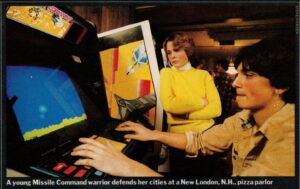 In the late 70’s and early 80’s video games started to emerge as a replacement for pin ball machines. Pong was a name everyone knew; it was a huge success but it was also easy to learn and a player could get bored fairly quickly. It wasn’t until Space Invaders came out that things really started to turn. Games were built to become more challenging as the player progressed to higher levels. They also started to incorporate vivid colors and sounds to elevate the experience.
In the late 70’s and early 80’s video games started to emerge as a replacement for pin ball machines. Pong was a name everyone knew; it was a huge success but it was also easy to learn and a player could get bored fairly quickly. It wasn’t until Space Invaders came out that things really started to turn. Games were built to become more challenging as the player progressed to higher levels. They also started to incorporate vivid colors and sounds to elevate the experience.
This article starts out by detailing the achievements of young Steve Juraszek who played the game Defender for 16 hrs and 34 mins on a single quarter. During that time, he accumulated a score of 15,963,100. This was pretty impressive considering that a good player might manage a score of 500,000 on a quarter. For his efforts, Steve gained a world record and was restricted from leaving school grounds due to missing classes. Steve’s mom also pointed out that she wished he would put as much effort into his homework.
Video game “Athletes” like Steve were starting to pop up in arcades all over. Arcades were becoming big business with earnings of over $5 billion per year. Home consoles brought in another $1 Billion. By comparison, all the casinos in Nevada only made an estimated $1 billion and the U.S. movie industry made $2.8 Billion per year.
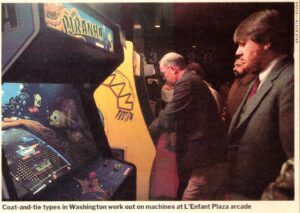 Unfortunately, the video game world was not all fun and games. Many people viewed arcade games as an addictive and destructive social enemy that was spreading worldwide. It was perceived that game producers were targeting the lunch money of children. Many people reported that they would spend a minimum of $3 per arcade visit, but often $20 or more. In fact, adults were also commonly seen crowding into arcades in their business suits during lunch breaks.
Unfortunately, the video game world was not all fun and games. Many people viewed arcade games as an addictive and destructive social enemy that was spreading worldwide. It was perceived that game producers were targeting the lunch money of children. Many people reported that they would spend a minimum of $3 per arcade visit, but often $20 or more. In fact, adults were also commonly seen crowding into arcades in their business suits during lunch breaks.
People in some communities led successful efforts to restrict the number of arcade games in an establishment to just three. In other areas there were attempts made to place age restrictions on gaming. Philippine President Marcos banned arcade games altogether and gave people a few days to ensure all existing machines were destroyed.
Despite the negative attention, arcades looked like they had a bright future. As we know, video games have grown and become something that not many of us would have foreseen in those early years. Arcades, on the other hand, didn’t fair as well once home consoles started to dominate the scene.
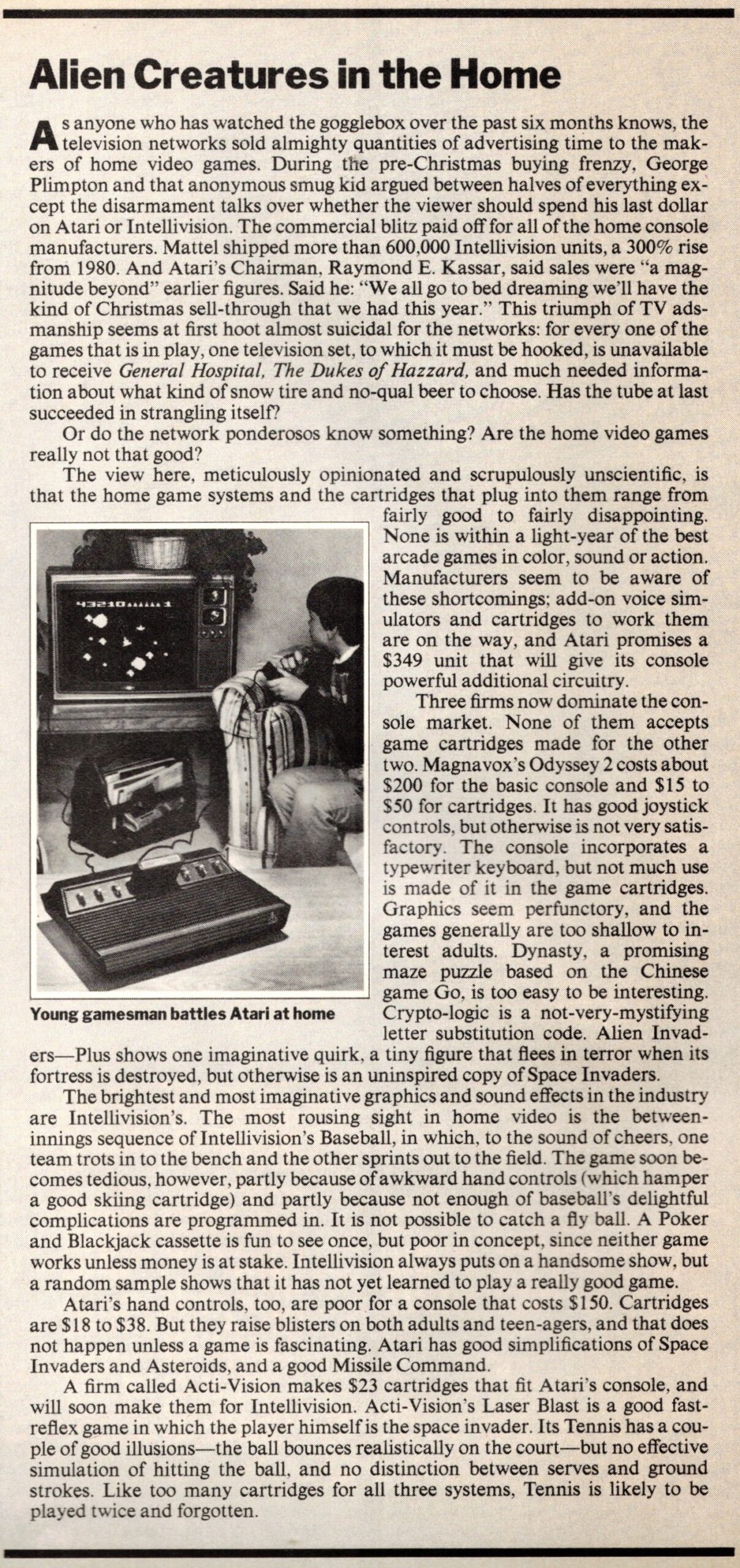
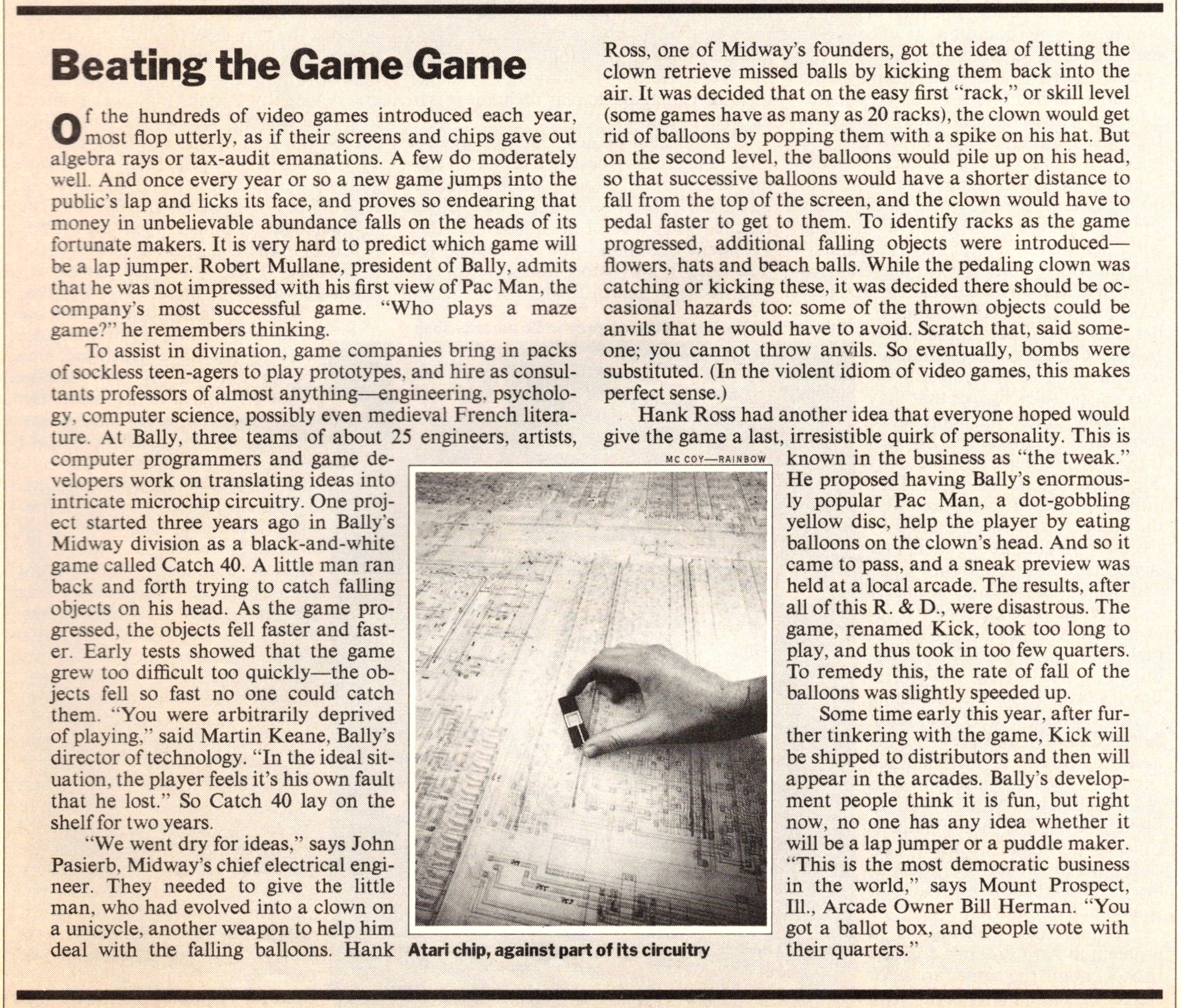
The rains came, the mud flowed
This week California saw extremely heavy rains that amounted to more than 12 inches in only 32 hours. The massive rain event had followed weeks of downpour that had already completely saturated the landscape. As a result, whole mountainsides turned into massive flowing mud slides that covered entire towns, displaced many, caused hundreds of millions in damages and took several lives.
 In the town of Marin Bounty, more than 80 houses were destroyed. Witnesses in this article provide harrowing stories of near-death situations. Many witnessed the loss of friends and loved ones. The situation was so bad that some farmers had to resort to shooting their livestock as they drifted away down swollen waterways.
In the town of Marin Bounty, more than 80 houses were destroyed. Witnesses in this article provide harrowing stories of near-death situations. Many witnessed the loss of friends and loved ones. The situation was so bad that some farmers had to resort to shooting their livestock as they drifted away down swollen waterways.
The price of empire
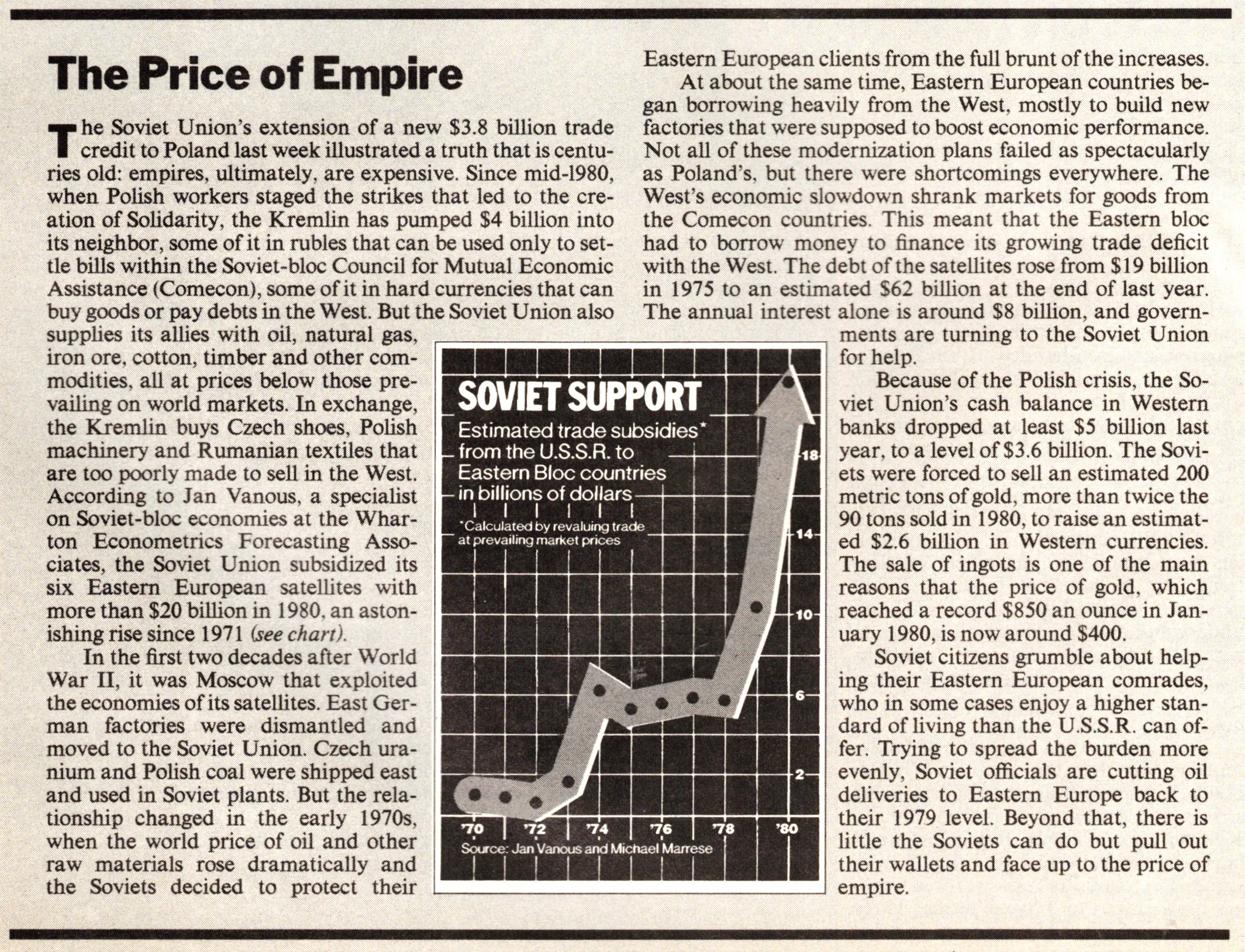
Rising Racial tensions in Zimbabwe
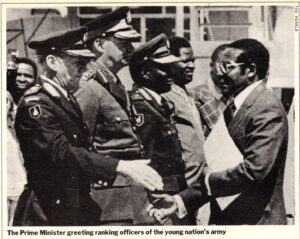 In the early 1980’s Zimbabwe had a predominantly black population (7 million) and a much smaller white population (180,000). Although whites made up less than 3% of the population, they played a leading role in the country’s economy. However, Prime Minister Mugabe took control with a black majority government in 1980.
In the early 1980’s Zimbabwe had a predominantly black population (7 million) and a much smaller white population (180,000). Although whites made up less than 3% of the population, they played a leading role in the country’s economy. However, Prime Minister Mugabe took control with a black majority government in 1980.
On December 18, 1981, an explosion rocked the Salisbury headquarters of Mugabe’s ruling Zimbabwe African National Union-Patriotic Front (ZANU-P.F.). Mugabe believed that some of the white population was plotting against him and that these political dissidents were responsible for the attack. On New Year’s Eve, three white police officers were arrested and accused of having stock piles of weapons in their homes.
Mugabe started announcing harsh new measures to deal with the suspected saboteurs. The hardline approach taken by Mugabe saw the extension of emergency regulations which allowed the government to seize the property and assets of suspected political dissidents without trial. Essentially, the government could punish anyone they didn’t like and they had no right to appeal.
Although it seems that Mugabe had intended to improve life for the larger black population, the extreme changes had negative effects. Racial tensions rose dramatically, there were reports of white tourists getting roughed up by soldiers, and skilled white workers who were in critical positions within the country’s agricultural and business sectors, began leaving the country in record numbers. By 1981 it was estimated that at least 10% of the white population had already moved.
The case of the missing groom
Philippine President Marcos’ daughter Maria Imelda Marcos met a young American named Tommy Manotoc. Manotoc was previously married and this was part of the reason why President Marcos’ wife was strongly opposed to Maria and Tommy getting married. However, Maria and Tommy secretly wed on December 4 in Arlington, Va.
During a visit in New York City, Tommy reported that the president’s wife went “berserk” over their marriage. Later that month President Marcos asked Maria and Tommy to come to the Philippines, his request was reportedly made because he would be able to better rectify the situation if they were present.
Maria and Tommy complied with the request and made the trip to the Philippines. A couple days prior to New Year’s Eve the couple went out for dinner at Manila’s Las Conchas restaurant. Maria went home to Malacañang Palace escorted by a motorcade of security men. Tommy left in a 1977 white Mitsubishi Gallant and disappeared.
Four days after Tommy went missing, a message was received that demanded the release of four political prisoners and a $2.5 million payment. The government insisted that Tommy had been kidnapped and that they were making every effort to find him. However, the actions taken to find Tommy suggested that there was no urgency placed on the matter. A full week after he disappeared, authorities still had not visited Las Conchas restaurant.
President Marcos contacted Tommy’s father to ask that he keep the situation discreet by not contacting press or police. Tommy’s mother had other ideas, she spoke out and directly blamed the Marcoses for the disappearance of her son. President Marcos denied these allegations.
During Tommy’s absence Maria’s efforts to help amounted to her taking one of Tommy’s shirts to a psychic. The psychic revealed that Tommy was doing well and that he was with friends.
In the end, Tommy was missing for 41 days. It is reported that he was rescued from insurgents of the New People’s Army who held him captive in the mountains 55 miles from Manila. There are still questions that remain as Tommy never saw his captors and members of the New People’s Army made a statement indicating that they had nothing to do with Tommy’s abduction.
Maria and Tommy remained together long enough that they had three children. They are reported to be separated now.
Without Excessive Applause
Earlier this year we created a post for the January 5, 1981 issue of TIME. Reagan was newly elected and there was a lot of anticipation about how he would perform. Have a read of this piece for an update after a year on the job.
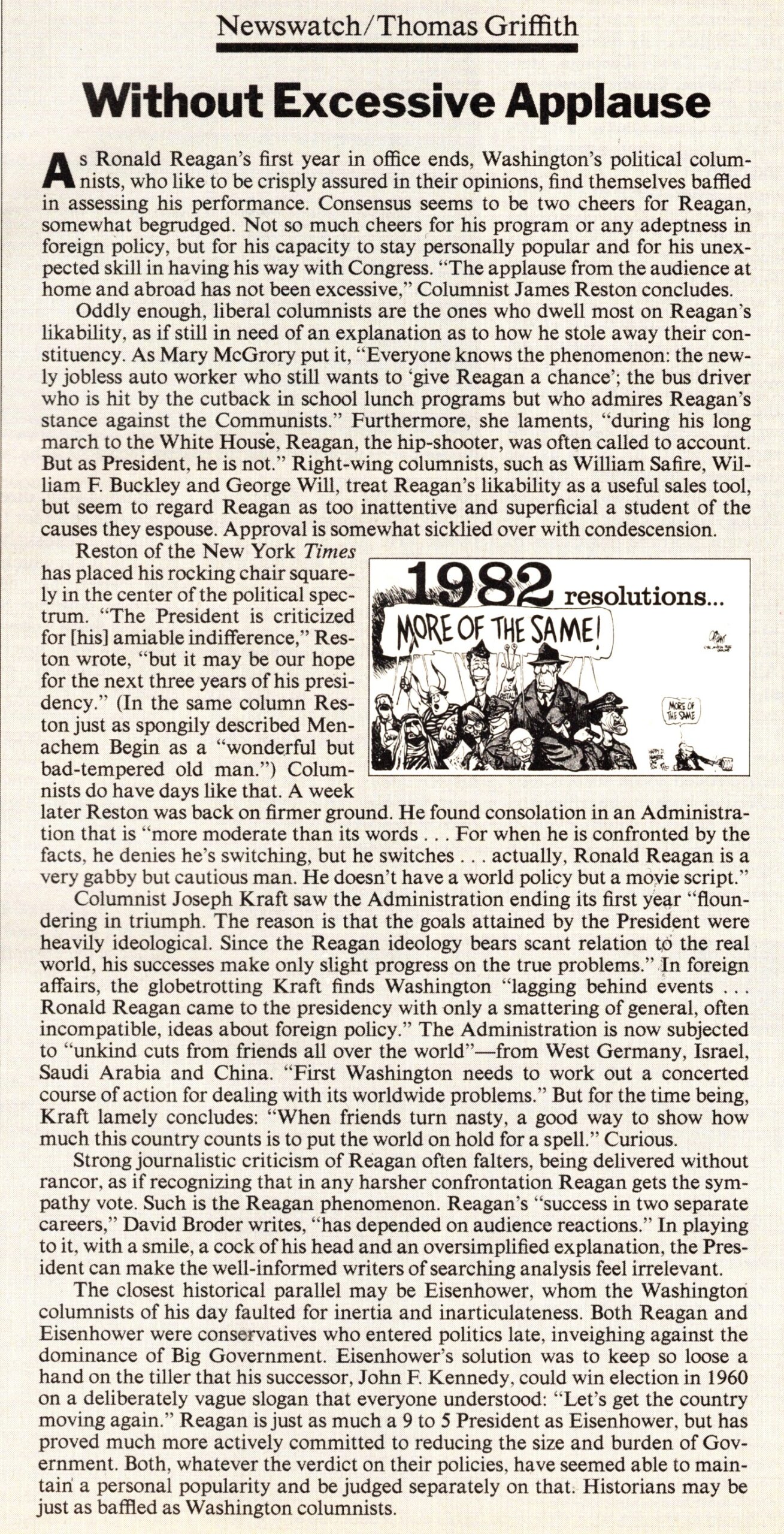
Wrap up
Follow us here at This Week In Time or explore our shop Presents From The Past Antiques (PFTPAntiques) to start your own journey through time. Next week we will look at the January 26, 1970 issue.
The early days of video games seem to have taken the world by storm. I’m sure that some of you grew seeing the growth and change in the video game industry. Do you remember going to the arcade as a kid? What game did you master? Let us know in the comments.
